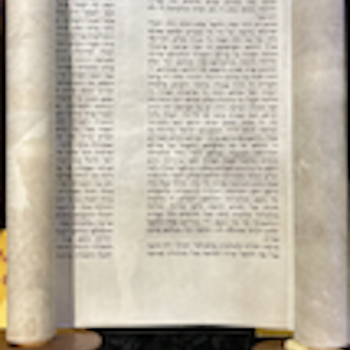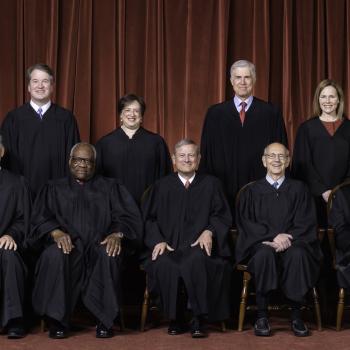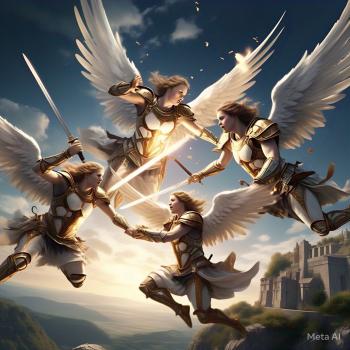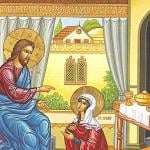 I have been a student of the apocalyptic book of Daniel in the Old Testament (OT) for nearly sixty years. I have several commentaries on Daniel in my theological library. They include, with commentary sets in parenthesis, those of Carol Newsom (The Old Testament Library) John J. Collins (Hermenia), L. F. Hartman and A. A. Di Lella (The Anchor Bible), John E. Goldingay (Word Biblical Commentary), and John F. Walvoord. These are full commentaries. I have older and partial commentaries that, in many ways, I think are better. They include those of G. H. Lang, S. P. Tregelles, and church father Jerome, who is most known for compiling the Latin Vulgate.
I have been a student of the apocalyptic book of Daniel in the Old Testament (OT) for nearly sixty years. I have several commentaries on Daniel in my theological library. They include, with commentary sets in parenthesis, those of Carol Newsom (The Old Testament Library) John J. Collins (Hermenia), L. F. Hartman and A. A. Di Lella (The Anchor Bible), John E. Goldingay (Word Biblical Commentary), and John F. Walvoord. These are full commentaries. I have older and partial commentaries that, in many ways, I think are better. They include those of G. H. Lang, S. P. Tregelles, and church father Jerome, who is most known for compiling the Latin Vulgate.
In my Still Here series that I am writing on eschatology (first two books are published; see kermitzarley.com), my next two of four books will feature the book of Daniel quite a bit. And I will not agree many times with leading, contemporary scholars, some of whom I listed above. So, I’m going to give a brief overview, here, of the book of Daniel as I see it.
Of course, it appears rather arrogant for me, a non-academic, to disagree with biblical scholars. Yet, biblical scholars don’t always agree with each other. And I certainly do read them a lot. So, I interact with them just like they do with each other. A primary difference between me and them is that I accept Daniel as divinely-inspired by God and that it is prediction when it so presents itself. Many who write Bible commentaries are professors, some at secular universities, and they don’t quite agree with that.
For instance, most authorities on the book of Daniel get started on the wrong foot by dating Daniel in the second century BCE. Many such scholars also believe that much of Daniel is history, not prophecy. They also believe it was written by someone who lived during the Maccabean Era who related historical events of that time. I think that it quite wrong. Regarding some of these scholars, it smacks of a lack of faith in God and his prophetic word. Some of these authorities on Daniel excel academically as professors. But do they also excel spiritually? I don’t know. I know Walvoord, Lang, and Tregelles did. I knew Dr. Walvoord. These scholars believed in an early Daniel.
There are many reasons to support an early date of the composition of Daniel. But this is a brief overview, so I will only list three. First, according to the book of Daniel, the author was a Jewish exile of the Diaspora in the sixth century BCE as witnessed by several historical markers (e.g., Dan 1.1; 2.1; 7.1; 8.1-2; 9.1; 10.1). To say that this is not true is to accuse the author of forgery. Jesus sure didn’t believe that.
Second, Jesus must have been influenced by Daniel more than any other OT book with regard to his constant identification of himself as “the Son of Man.” That is an abbreviation of the expression “one like a son of man” which is only in Dan 7.13 in the OT (cf. Revelation 1.13; 14.14). And Jesus must have gotten his views of the kingdom of God mostly from the book of Daniel (Dan 2.35, 44; 7.14, 18, 22, 26-27). For, there is not much else about this kingdom in the prophets. (The “kingdom” in Dan 2 and 7 is a worldwide kingdom, thus not precisely the kingdom of Israel, which it includes.) So many of Jesus’ parables are about “the kingdom of God.”
Third, in Jesus’ Olivet Discourse he says, “So when you see the desecrating sacrilege standing in the holy place, as was spoken of by the prophet Daniel” (Matt. 24.15 NRSV; cf. Mark 13.14). Daniel mentions this “abomination that desolates” three times (Dan 9.27; 11.31; 12.11). It is a major feature of end times biblical prophecy. Jesus therefore believed that the book of Daniel came from Daniel of the exile.
I believe the book of Daniel is a literary unit that first provides a prophetic framework of “the times of the Gentiles” (Luke 21.24) in Daniel 2. Then the remaining visions that Daniel has and relates fill in details in that framework. For example, the four body parts of King Nebuchadnezzar’s dream-image that are made of four different metals in Daniel 2 correspond to the four beasts in Daniel 7. Daniel was living during the time of the first of those four empires.
Furthermore, the kingdom in Daniel 2 is that which is given to the Son of Man in Dan 7.13-14. I regard this text as the most important in the OT, except the Shema (Deut 6.4-5), from the Christian perspective. It is a royal ceremony in heaven which will actually occur right before “the end of days” on earth. Although Daniel 7 does not say the Son of Man will receive the kingdom and then bring it to earth, this is surely implied when it says “the holy ones of the Most High shall receive the kingdom and possess kingdom forever–forever and ever” (Dan 7.18, cf. 22, 27; 2.35, 44). I also believe Jesus alluded to Dan 7.13-14 with a parable about himself, which he begins by saying, “A nobleman went to a distant country to get royal power for himself and then return” (Luke 19.12).
Incidentally, this expression “end of days” does not mean days will be no more; rather, it refers to the end of Gentile supremacy (“times of the Gentiles”) on earth. Thereafter, Jesus the Jew will be king of the world and rule from Jerusalem, with Israel the greatest nation on earth.
Many scholars in the past embraced the so-called “Jewish interpretation” of Daniel 7. They interpret “one like a son of man,” in v. 13, as only symbolic of Jews during the endtimes, with “the holy ones” (vv. 18, 21-22, 25, 27) referring to actual, suffering Jews. On the contrary, Jews are not in view in Daniel 2 or 7, but they are in view throughout the remainder of the book.
I suspect this is further indicated by the language of the book of Daniel. Ancient manuscripts of Daniel 2-7 are in Aramaic, whereas Daniel 1 and 8-12 in these manuscripts are in Hebrew. Hebrew, of course, was Daniel’s native tongue. Aramaic was his language while an exile in Babylonia for the rest of his life. I think the Hebrew portion of the book indicates it is about the Hebrew/Jewish people, whereas the Aramaic portion of the book indicates it is about “the times of the Gentiles,” with the future kingdom of God being worldwide and therefore comprising mostly Gentiles.
Some contemporary commentators on Daniel think “one like a son of man” in Dan 7.13 is an angel, with Michael the archangel as their main choice. Some think this due to the word ke (“like”) in the Aramaic text. That is, they think this indicates the figure is non-human. On the contrary, I believe it indicates Jesus’ Virgin Birth.
I believe “the little horn” of Daniel 7 and 8 symbolizes the same figure and that it is a symbol for the final Antichrist. Perhaps most scholars nowadays believe contrarily, that it refers to Antiochus IV of the second century BCE. I believe it could have indicated Antiochus–which I will explain in detail in my future books–but it doesn’t.
All students of Daniel agree the angel’s revelation to Daniel, in Dan 9.24-27, is a major prophecy in the Bible. Gabriel says, “Seventy weeks are decreed for your people,” the Jews, “and your holy city,” Jerusalem, which lay in ruins then, and “to finish the transgression”(v. 24). Seventy heptads means seventy weeks of years, thus 490 years. This revelation is an answer to Daniel’s prayer in 9.1-19.
The main reason scholars have believed that the book of Daniel was written in the second century BCE is that Porphyry–a famous Greek philosopher and skeptic–wrote a book trying to disprove Christianity. A major portion of this book was commentary on Daniel 11. This text is about conflict between a succession of kings in the “north” and kings in the “south.” Porphyry alleged that it represented the history of the conflict between the Seleucid Dynasty (mostly in present Syria) and the Ptolemy Dynasty (mostly in present Egypt) which occurred mostly in the second century BCE. Much of Dan 11.5-20 does seem to fit fairly well with that Seleucid-Ptolemy history. But especially Dan 11.36–12.13 does not. I believe that “the king” who “shall act as he pleases,” in v. 36, refers only to the Antichrist and therefore cannot refer to Antiochus. Antiochus never fought a battle in Israel or died there, and that’s what this king does.
As for Daniel 12, it further reveals that Michael the archangel is “the protector of your people” (v. 1; cf. 10.21). That is, Michael is the unnamed guardian angel of Israel portrayed in Ex 23.20-23 and 33.2. His being that guardian distinguishes him from “one like a son of man” in Dan 7.13. Dan 12.2 is the foremost verse in the OT which affirms the yet future resurrection. It reads, “Many of those who sleep in the dust of the earth shall awake, some to everlasting life, and some to shame and everlasting contempt.”
“What shall be the outcome of these things” (Dan 12.8), asks Daniel. The angel says, “go your way, and rest; you shall rise for your reward at the end of the days” (Dan 12.13). So, when Daniel dies, that will not be the end of him. And so it will be for all those who truly trust in the God of Abraham, Isaac, Jacob, and Daniel, the God of the Bible. They rise in the resurrection to thereafter experience eternal life in the kingdom of God. And they will enjoy their eternal rewards for a life previously well lived in the service of God Almighty. And all these “peoples, nations, and languages” will also “serve him” who is that “one like a son of man” (Dan 7.13-14).












